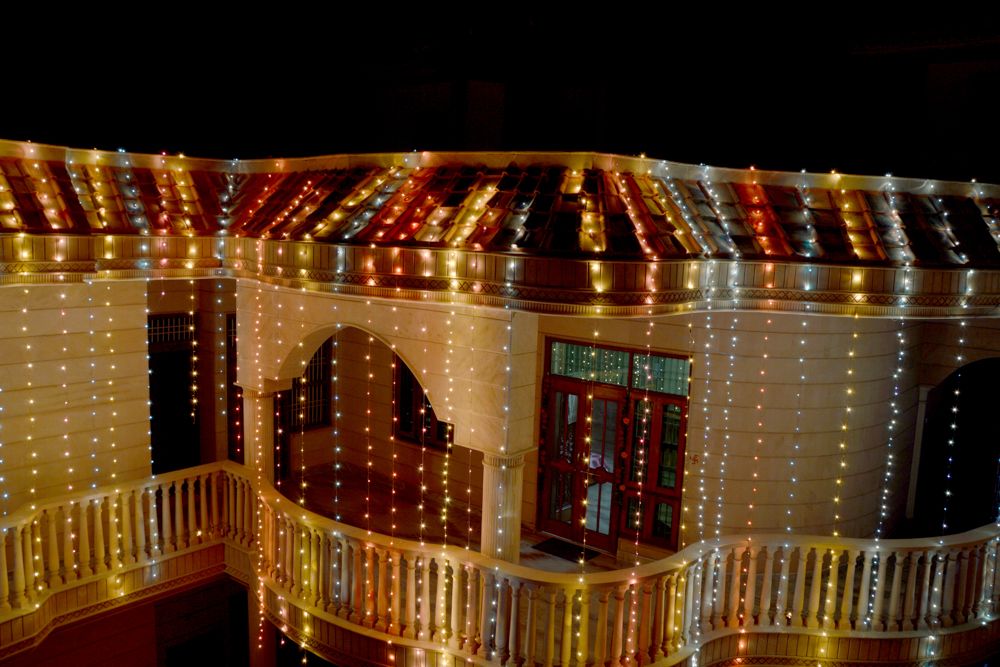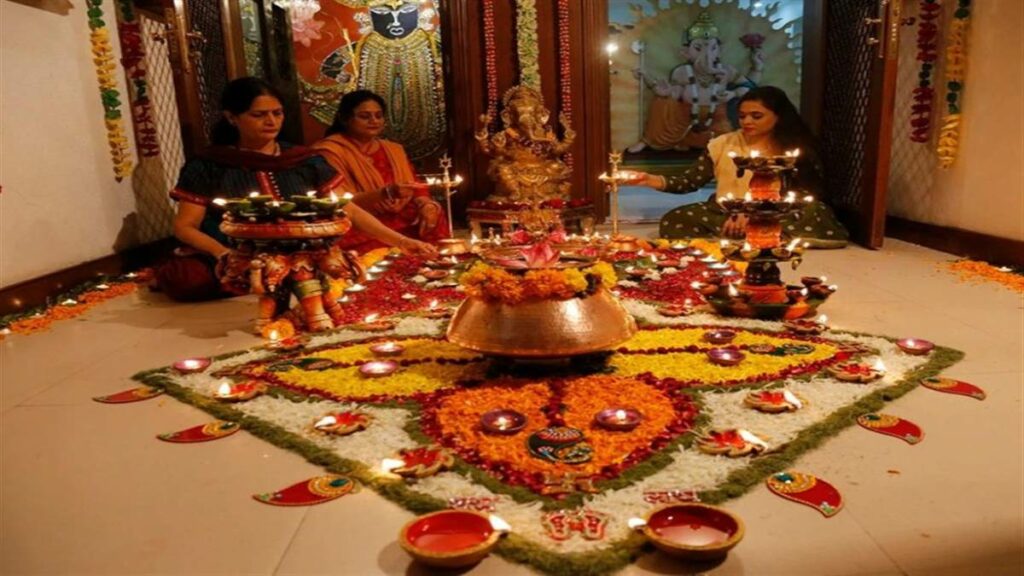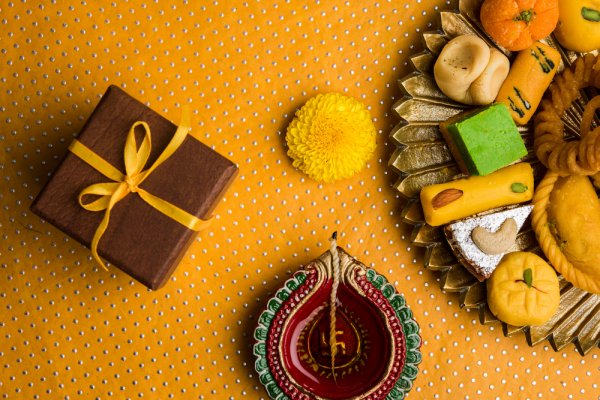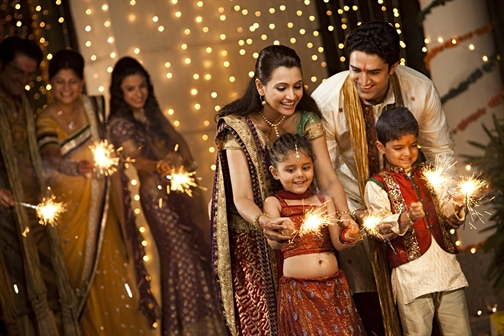Diwali, also known as the Festival of Lights, is an ancient and vibrant Hindu celebration held worldwide. It symbolizes the triumph of light over darkness, good over evil, and knowledge over ignorance. The festivities, which span five days, embody unity, renewal, and the power of good. Diwali is an occasion for joyous celebration, self-reflection, and communal bonding. Beyond the lights, gambling, and fun, Diwali is also a time to clean, prepare delicious foods, remember the narratives of ancient scriptures, and welcome the divine into one’s life. In this guide, we will delve into the various facets of celebrate Diwali Festival, from preparing your home to the core rituals, ensuring you celebrate this festival with the respect and joy it deserves.
1. Diwali Preparation
Preparation for Celebrate Diwali Festival in India is a joyous affair full of anticipation. It commences with cleaning homes thoroughly to invite prosperity and is symbolic of purifying one’s heart. Traditionally, households are whitewashed and adorned with colorful rangoli designs at the doorstep, signifying a warm welcome to the Goddess Lakshmi. Diwali is incomplete without the gleam of diyas (oil lamps) and colorful fairy lights, which illuminate homes, signifying the triumph of light over darkness. Shopping is another major part of preparation. From new clothes symbolizing the start of a new life phase to gold, kitchen utensils, and other essentials, Diwali is a time for rejuvenation. And no celebration is complete without sweets and delicacies, which are either bought or made at home. This bustling preparation period sets the stage for the exciting festivities to follow.
2. Creating a Festive Atmosphere: Decorating Your Home

Creating a festive atmosphere at home is a quintessential part of Diwali celebration in India. The celebration begins with homes being swept clean, signifying a fresh start and preparation to welcome the goddess Lakshmi, the deity of wealth and prosperity. People decorate their homes with colorful rangolis, an artistic pattern made with colored powders, flowers, or rice at the entrance, symbolizing a warm welcome for the divine. Along with rangolis, homes are adorned with countless oil lamps or ‘diyas’ and fairy lights, illuminating every corner, and symbolizing the victory of light over darkness. Decorations extend to curtains, cushions, and tablecloths, often in vibrant shades of gold, red, and orange. Fresh flowers, particularly marigolds, are used to create garlands and adorn doorways and windows. Creating this joyous and vibrant atmosphere encapsulates the spirit of Diwali and radiates positivity and festivity.
3. The Ritual of Puja
The ritual of Puja is a fundamental aspect of Diwali celebration in India. This sacred practice involves offering prayers to deities, predominantly Goddess Lakshmi, who represents wealth, prosperity, and well-being. The Puja is typically performed on the evening of Diwali, known as ‘Amavasya’. The family members gather around a specially prepared altar adorned with idols, flowers, sweets, and lit diyas. The ceremony includes reciting prayers and mantras, making offerings of sweets (prasad), and lighting incense sticks and diyas. The sound of conch shells and bells echo throughout the house, creating an atmosphere of sanctity. The ritual ends with an Aarti, a song of praise, sung in honor of the deity while moving the lit diya in a circular motion. This ritual strengthens familial bonds and fosters a sense of unity, enhancing the spiritual essence of the Diwali festival.
4. Beauty of Diyas and Rangolis

Diyas and Rangolis are quintessential elements of Diwali celebrations, adding vibrancy and beauty to the festivities. Diyas, small oil lamps traditionally made of clay, are lit in every corner of the house to symbolize the triumph of light over darkness. The warm, flickering light from the diyas creates an enchanting ambiance, signifying hope and prosperity. On the other hand, Rangolis are intricate designs created on the floors of entrances and courtyards using colored powders, rice, or flower petals. These geometric and floral patterns serve not only as a welcoming gesture for the goddess Lakshmi but also as an artistic expression of joy and celebration. Rangolis bring a burst of color to the festivities, stimulating creativity among family members who come together to create these splendid designs. The joy of lighting diyas and crafting rangolis truly encapsulates the spirit of Diwali, making it an unforgettable experience.
5. Fireworks and Festivities
Fireworks and festivities are integral aspects of Diwali celebration in India, injecting an air of exhilaration into the five-day festival. Post the traditional ‘Puja’, families and communities gather outdoors to light an array of fireworks that illuminate the night sky, a spectacle that is truly a feast for the eyes. The loud cracks of the fireworks are considered to ward off evil spirits and usher in good fortune. While this practice is gradually becoming eco-friendlier due to environmental concerns, the excitement and joy it brings remain the same. Moreover, festivities include feasting on a variety of sumptuous traditional dishes and sweets, dancing, and singing. Exchange of gifts between families and friends is also common, fostering a sense of community and love. This vibrant amalgamation of color, sound, and joy is what makes Diwali one of the most anticipated festivals in India.
6. Diwali Sweets and Snacks
Diwali in India is as much about gastronomical delight as it is about lights and festivities. Sweets and snacks play an essential role in the celebration, signifying the sweetness of life and the triumph of good over evil. Traditional Indian sweets such as ‘Gulab Jamun’, ‘Barfi’, ‘Laddu’, ‘Jalebi’, and ‘Kaju Katli’ are commonly prepared and exchanged among neighbors, friends, and family. Additionally, savory snacks like ‘Samosa’, ‘Chakli’, ‘Namak Para’, and ‘Mathri’ add balance to the festive indulgence. Each of these dishes has a regional touch, reflecting the diverse culinary heritage of India. Many families dedicate a considerable amount of time to prepare these treats at home, transforming their kitchens into hubs of warmth and delicious aromas. The shared joy of preparing, distributing, and consuming these delectable treats indeed enhances the festive spirit of Diwali.

7. Gift Exchange
Gift exchange is a cherished tradition during Diwali in India, serving as a medium to express affection, respect, and gratitude towards loved ones. During Diwali, the marketplace brims with a wide array of gifts, ranging from sweets and dry fruits to home decor items, appliances, jewelry, clothing, and even electronic gadgets. Many families also gift ‘Diyas’, ‘Rangoli’ kits, or eco-friendly gifts, promoting sustainability. Additionally, businesses seize this opportunity to show appreciation to their employees and clients through thoughtful Diwali gifts, which often include bonus checks, hampers, or personalized items. This act of giving not only strengthens relationships but also propagates prosperity, as it’s believed that giving gifts in Diwali leads to divine blessings and abundance. The joy seen on the faces of loved ones upon receiving gifts truly adds to the festive cheer of this dazzling festival.
8. Dressing for Diwali
During Diwali, people across India dress in their finest traditional attire, adding to the festival’s splendor and celebratory spirit. Dressing up is a significant aspect of Diwali celebrations, reflecting the jubilant mood and the aesthetic grandeur of the occasion. Men usually wear kurta-pajama sets or dhoti-kurta, while women adorn themselves in vibrant sarees, lehengas, or salwar-kameez, often made of silk or other rich fabrics, and embellished with intricate designs. Both children and adults often opt for new clothes, symbolizing the start of a prosperous new year. Traditional Indian jewelry, especially gold, and accessories like bindis and bangles for women, add a final touch to the festive look. The spirit of Diwali also inspires people to wear bright colors, aligning with the festival’s theme of light triumphing over darkness, and adding a dash of cheer to the festivities.
Celebrate Diwali Festival in India by Spreading Joy and Giving Back
Diwali, the festival of lights, is not only a time for personal celebration but also an opportunity to come together as a community and extend a helping hand to those in need. One beautiful aspect of Diwali is the spirit of charity and giving that permeates the atmosphere. Here are some ways to celebrate Diwali by making a positive impact on the community:
. Donate to charitable organizations: Consider donating to local charities or NGOs that support underprivileged communities. This could involve contributing money, food, clothing, or other essential items to those in need.
. Volunteer your time: Offer your time and skills to community service initiatives. Participate in activities like cleaning public spaces, organizing health camps, or teaching underprivileged children.
. Visit orphanages and old age homes: Spread joy by visiting orphanages or old age homes in your community. Spend time with the residents, share festive treats, and engage in conversations to make them feel loved and cared for.
. Share the joy of Diwali: Extend your celebration to others by distributing sweets, gifts, or essentials to your neighbours, friends, and colleagues. This fosters a sense of unity and goodwill within the community.
. Light up others’ lives: Help those who may not be able to celebrate Diwali by themselves. Offer to decorate the homes of elderly neighbours or those with physical limitations, ensuring they can experience the festive ambiance.
Related: 10 Most Celebrated festival Around the World.
Celebrating a Green Diwali
Diwali, also known as the Festival of Lights, is a vibrant and joyous diwali celebration in India. Traditionally, it involves the lighting of oil lamps, bursting of firecrackers, and exchanging sweets and gifts. However, in recent years, there has been a growing awareness about the environmental impact of Diwali celebrations. Many people are now opting for a more eco-friendly approach to celebrate this auspicious festival.
One of the key aspects of celebrating a green Diwali is minimizing air and noise pollution caused by firecrackers. Instead of bursting out loud and polluting fireworks, people can choose to light eco-friendly diyas (oil lamps) and decorate their homes with natural materials like flowers and leaves. Additionally, eco-friendly firecrackers made with minimal noise and air pollution are also available as an alternative.
Another important aspect is reducing waste generation. Opting for eco-friendly and biodegradable decorations, using reusable plates and utensils for festive meals, and avoiding excessive packaging while exchanging gifts are some ways to minimize waste during Diwali.
Furthermore, promoting and supporting local artisans and businesses can be a part of the green Diwali celebration. Buying locally made products and handicrafts not only helps the local economy but also reduces the carbon footprint associated with long-distance transportation.
Overall, celebrating a green Diwali is about being mindful of our actions and making conscious choices that have a positive impact on the environment.
Conclusion
Diwali is a joyous and auspicious festival celebrated with great enthusiasm in India. It is a time of lights, family gatherings, feasts, and spreading happiness. By incorporating eco-friendly practices, embracing the spirit of giving, and celebrating with community involvement, we can make our Diwali celebrations more meaningful and impactful. Whether it’s lighting diyas, exchanging gifts, or participating in charity, the essence of Diwali lies in fostering love, unity, and goodwill. Let us cherish the traditions, uphold the values, and celebrate Diwali in a way that brings joy to our lives and touches the hearts of others. Happy Diwali!


